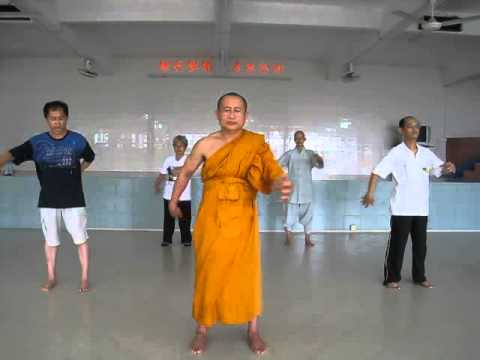5 ideas for people who find seated meditation difficult — and ways to re-motivate your practice
Did you know, in the United States, meditation is the second most popular body and mind practice; first is yoga? Many studies have revealed that medication has several psychological and health benefits. Meditation allows you to relax and boost your awareness whenever you feel stressed.
By James Thames
(Bio below.)
The person who meditates has an opportunity to improve his overall physical and mental well-being as well as develop emotional health. There are numerous research studies indicating the significant health and mental benefits of meditation. [See our previous feature on the 10 benefits, with 17 cited studies, covering the benefits of meditation>>]
The benefits are clear, but a lot of people find seated meditation challenging.
In this article, I will discuss five ideas for people who find seated meditation difficult, and possible solutions.
Reasons why people find it hard to meditate
The most pervasive issue is the “monkey mind” — where we are so unsettled in our thoughts that mindfulness meditation feels stressful. [For a feature on monkey mind, see>>] We can also quickly become exhausted if we do nothing for an extended period of time, even if it is only 10 minutes. But why can something as easy as sitting quietly, and observing our breath, create a feeling of dread or worry? Usually, it’s due to discomfort.

Below are some reasons why seated meditation appears challenging for many people — some are health-related reasons, some are lifestyle — together with some solutions.
I feel uncomfortable sitting for too long
There are a number of people who simply can’t sit comfortably for more than a few minutes. Conditions such as injury, arthritis, or poor posture can make sitting anything but relaxing — especially if you try to sit cross-legged on the surface.

I have no time for meditation
If you have small children or full-time employment, it could be perhaps the main reason — or excuse — to avoid meditation. But the seating meditation requires only ten minutes, and it can help destress you, making your more productive at work, or more patient with the children. If you have time to watch Youtube or television, you can find ten minutes to meditate and destress.

I couldn’t see any benefits
Many people feel the benefits of meditation after only one session, but most of us need more time — a little discipline. After a daily, short practice, for just a couple of weeks, you could notice a change. Motivation is the key issue here. Below are several ways to remotivate your meditation practice, from group practice to watching guided meditations on Youtube.
Sedentary lifestyle — we already sit too much!
Statistically, modern “western” lifestyles are among the most sedentary in history. According to a survey by Ergotron, 70 percent of American workers hate sitting, yet 86 percent do too much of it every day. It’s no secret it’s bad for our health.
What’s the average? 13 hours of sitting, combined with 8 hours of sleep — a whopping 21 hours a day of a sedentary lifestyle. Who wants to sit another half hour in meditation? If this is you, there are options, such as walking, standing, Tai Chi, and various yogas. [1]

What can we do if we can’t sit?
There are a lot of reasons people find it hard to meditate, but the above ones are the most common that usually take place.
What can you do — if you want to benefit from meditation, but find it challenging?

5 Ideas for people who find seated meditation difficult
If you overthink, you may believe that you don’t need meditation and it isn’t for you. But, meditation is essentially acquired by people with a busy and stressed minds.
Before we dive into 5 things you can try to motivate yourself to meditate successfully despite these difficulties, there are a couple of things to remember.
You don’t have to sit in a lotus posture on the floor, especially if that’s uncomfortable. Just sit straight on a sturdy and comfy chair. You can also practice yoga, walking meditation, or qi gong, as alternatives. “Moving” or standing meditation can be just as effective as seated meditation.

Mindfulness has many forms
The most popular and, arguably, most useful meditation practiced for thousands of years does not require any special techniques. If they are difficult, forget lotus postures and other challenging methods.
Simply: be. Be mindful. Watch your thoughts. Watch your breath. Stay in the present moment. You can do that sitting, standing, in the car (not while driving!), in your lunchroom at work, in bed. Mindfulness is at the same time, both profound and simple.

It is helpful to have a focus. You can decide to focus mindfully on your breath. You can watch your own discursive thoughts — you’ll be amazed how out of control your thoughts can be once you actually become the observer.
Determine what you’d want to focus on throughout your meditation practice session. When you discover your concentration has strayed from the focus you’ve set, gently bring it back.
There’s nothing wrong with you or your meditation practice if you have a lot of feelings throughout your practice. Mindfulness of feelings is another focus. Consider it an opportunity to learn new ideas and participate in them.

Try group meditation
Although meditation may appear to be a very private practice, there is unexpected power in crowds.
According to Candice Fairoth, a breathwork and meditation instructor in Los Angeles, mutual energy is a healthy thing; there’s no question that meditating with a partner or in a class can intensify your experience.
Making meditation a group activity not only helps us break out from our personal mental patterns, but it also brings both a little perspective and group motivation.

Check out walking meditation
Focus is the potential to pick what you want to think on and hold your attention there until you want to concentrate on something else consciously. Visual integrity is the capacity to follow what’s happening in your senses from moment to moment, separating the many perceptual threads and learning to notice increasingly faint feelings. Immobility is the ability to let feelings come and go, flourish and collapse, without battling them. However, it takes time to develop these abilities.

You may perform them sitting down with your eyes closed and your body steady, or you can do them while walking, running, dancing, cleaning the dishes, or speaking. You may include meditation into your life at any time. What matters is that you set aside some time each day to focus on intentionally directing your thoughts, being clear about what feelings are developing, and letting those sensations dance as they choose with as little resistance as possible.

Try out virtual meditation
Virtual meditating simply entails combining exclusive technology into your routine. Try using a virtual reality headset to help you relax and get incredible outcomes. Attaching the large gadget to your eyes and choosing pictures like a tranquil forest or a bright seashore efficiently blocks out all exterior disturbances, allowing you to completely relax.
There are other free ways to meditate digitally if a VR headset is not in your budget. Consider watching a YouTube video of your favorite nature location. Consider yourself surrounded by the splendor of your computer screen.

Add some music — or chanted mantras
There is no denying that music makes you feel better. What if you add it to your meditation?
The appropriate music helps educate the brain to be more alert. According to certain studies, listening to contemporary music can really calm down the pulse rate faster than silence.

As per Neidich, music or background noise may be a fantastic aid for persons with anxiety or for those who are hesitant to start meditating due to a busy mind.
Whatever you connect with peace and focus might be your ideal meditation music. Listen to a variety of music genres to see what you like most.
You can also try meditating with guided visualization videos with mantras. Among the most popular is the Heart Sutra mantra, from the Perfection of Wisdom Sutra:
- Here’s a handy bookmarkable playlist of “Guided Video Meditations” on Youtube where teachers guide your visualization and usually end with mantra chanting>>
- A playlist of chanted mantras with beautiful images>>
Final word — Just be comfortable
So, these were some effective ideas for people who find seated meditation difficult and each of them is based on a one objective: forget about your rigid notions of what meditation should entail. Meditation should be done in a method that is comfortable for you
Get intrigued about whatever comes up. Let every experience be precisely what it is. And you don’t have to go it alone. Other experiencers can provide and receive help. Look for teachers you can trust. Seek information and practice with them to learn from their knowledge. Also, keep in mind that there is no such thing as a terrible meditator.
NOTES
Author Profile — James Thames
James Thames is a professional who is specializes in writing, designing, and developing all sorts of digital marketing content. Thames holds expertise in delivering high-quality writing services to numerous students through Scholarly Help. Besides, he professionally uses contemporary technology to build relationships with clients.
More articles by this author
Search
Latest Features
Please support the "Spread the Dharma" mission as one of our heroic Dharma Supporting Members, or with a one-time donation.
Please Help Support the “Spread the Dharma” Mission!

Be a part of the noble mission as a supporting member or a patron, or a volunteer contributor of content.
The power of Dharma to help sentient beings, in part, lies in ensuring access to Buddha’s precious Dharma — the mission of Buddha Weekly. We can’t do it without you!
A non-profit association since 2007, Buddha Weekly published many feature articles, videos, and, podcasts. Please consider supporting the mission to preserve and “Spread the Dharma." Your support as either a patron or a supporting member helps defray the high costs of producing quality Dharma content. Thank you! Learn more here, or become one of our super karma heroes on Patreon.
James Thames
Author | Buddha Weekly
James Thames is a professional content marketer, who is specialized in writing, designing, and developing all sorts of digital marketing content. Thames holds expertise in delivering high-quality writing services to numerous students through Scholarly Help. Besides, he professionally uses contemporary technology to build relationships with clients.













